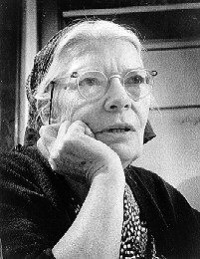CST Lay Movements
Catholic Social Activism in the United States
There have been several social movements within the United States that have been lead by Catholics, to read more about the broader movements in the US, visit this page. Examples of movements and organizations have also been listed below.
-
Community of Sant’Egidio: The Community of Sant'Egidio is a Christian community that is officially recognized by the Catholic Church as a "Church public lay association." It claims 50,000 members in more than 70 countries. Its main activities are: prayer, centered around a reading of the Bible; spreading the Gospel to help people who are looking for a sense to their life; service to the poor, which is free and unpaid; commitment to ecumenism (the Community of Sant'Egidio is also ecumenical, though being rooted in the Catholic Church); dialogue with members of other religions and non-believers.
-
Jocist: Members of JOC (Jeunesse Ouvrière Chrétienne—Christian Working Youth): The aim of Jocism is peaceful revolution, a Christian upsurge in the ranks of labor, based not upon Marxian materialism but upon the labor encyclicals of Popes Leo XIII and Pius XI. Canon Cardijn has repeatedly summed up JOC's program: "Every Jocist has a Divine mission from God, second only to that of the priest, to bring the whole world to Christ."

-
Catholic Worker Movement: In May 1933 in New York City, two American Catholics, Dorothy Day and Peter Maurin, founded a new Catholic peace group, the Catholic Worker, that would embody their ideals of pacifism, commitment to the poor and to fundamental change in American society. The Catholic Worker movement claims over 185 local Catholic Worker communities providing social services. Each house has a different mission, going about the work of social justice in their own ways, suited to their local region. Catholic Worker houses are not official organs of the Roman Catholic Church and their activities, inspired by Day's example, may be more or less overtly religious in tone and inspiration depending on the particular institution.
-
Catholic Campaign for Human Development: The Catholic Campaign for Human Development (CCHD) is the domestic antipoverty and social justice program of the United States Conference of Catholic Bishops (USCCB). CCHD was begun in 1969 as the "National Catholic Crusade Against Poverty" by the Catholic bishops in the United States, in part as a response to Pope Paul IV's encyclical Populorum Progressio ("The Progress of Peoples"). CCHD's mission is "to address the root causes of poverty in America through promotion and support of community-controlled, self-help organizations and through transformative social justice education, and solidarity between poor and non-poor."
-
Sanctuary Movement: Many Catholic, Protestant and Jewish congregations and temples responded positively -- offering these refugees social services and advocacy support as well as engaging actively in efforts to change federal immigration policy. These congregations, united under the banner of the Sanctuary Movement, also pledged that they would not reveal the identities of these refugees, even if they were arrested or jailed for doing so. The Sanctuary Movement was ultimately successful both in changing national policy and in protecting tens of thousands of individuals and families, enabling them to start a new life in the U.S.
-
Worker Justice Movement: Interfaith Worker Justice is one of the principle social action organizations working to improve wages, benefits, and working conditions for workers, especially low-wage workers.
- Corporate Social Responsibility Movement: The Interfaith Center on Corporate Responsibility works to promote peace, economic justice and environmental stewardship by encouraging companies to engage in socially and environmentally conscious practices.